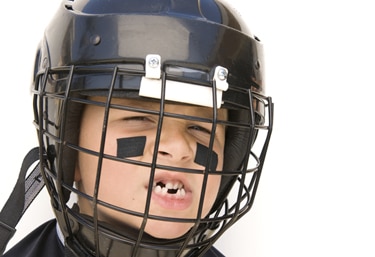For any parent, the day your child stands up for the first time is a pretty happy occasion. But as sure as she will stand on her own, and take her first steps, and eventually run and jump, she will also fall- a lot. When kids fall, they sometimes fall on their faces and break teeth. Eventually, when they start playing sport, collisions with other children and sporting equipment become a worry. Around 30% of children will suffer trauma to their baby teeth and roughly 1 in 5 will experience trauma to their permanent teeth by age 14.
So what do you do when your child falls over face first? First things first, you need to make sure that they haven’t suffered a brain injury – look out for pain, dizziness, nausea, lethargy and irritability. If you’re worried, head to the nearest paediatric emergency department.
Once you have decided the injury is confined to the dental region, see your dentist as soon as possible. The most common type of dental injury is the chipped tooth. If you can find the missing fragment, your dentist may sometimes bond it back to the tooth. But if you can’t find it, don’t worry. Modern filling materials can mimic the appearance of the natural teeth amazingly well.
If the entire tooth- root and all, has been knocked out, finding it is essential. Check their clothes if you can’t see it on the ground. If the tooth looks dirty, rinse it with milk (not water) and push it back into the socket. The tooth will usually click into place if there hasn’t been too much damage to the bone. Take some time to make sure you get the right side racing forward- the front of the tooth is usually smooth and flatter than the back- and hold it or get the child to bite down gently on a clean cloth. Time is of the essence, as the prognosis decreases dramatically if the tooth is out of the mouth for more than 15 minutes. If you can’t replant the tooth into the socket- not usually an easy task, store the tooth in milk (this buys up to 6 hours) or saline/contact lens solution (this buys you about an hour) and see the dentist immediately.
Of course, it’s better to prevent injuries to our children if we can, but how do you do that without wrapping them in cotton wool and placing them under house arrest? Well the common sense things include using seat belts and child restraints in cars, the use of helmets when riding bicycles, and mouth guards are a must for all contact sports and probably even non-contact ones like soccer, basketball and hockey. Children with a pronounced overbite- where their upper front teeth are more than 3mm in front of their lower ones, have 2-3 times greater risk of dental injury. It might be worthwhile seeing an orthodontist to see if this can be corrected early, while your child is 6 or 7 rather than waiting until they reach their teens, to get them out of harm’s way.
But still, accidents will happen when and where you least expect them, while they are running around the playground, or jumping in the pool, or even leaning back too far and tipping their chair over in class. Knowledge of dental first aid may save a child a many hours in a dentist’s chair. T32 dentists can give dental first aid talks in schools to students and caregivers so we all have some knowledge of what to do in those crucial, frantic first few minutes. Let’s just hope we never have to use it.
Author: Dr Paul Wong
